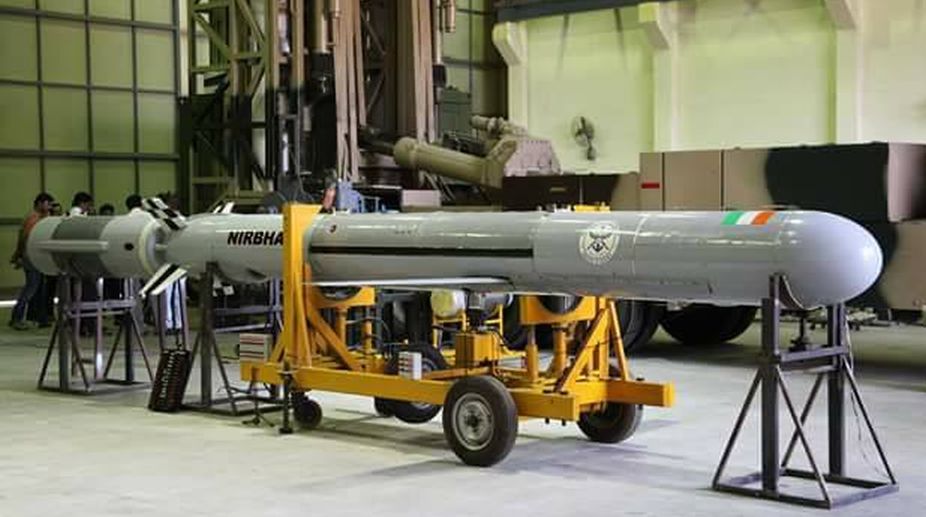India on Tuesday conducted a flight test of its indigenously designed and developed long-range sub-sonic cruise missile ‘Nirbhay’, which can carry warheads of up to 300 kg, from a test range at Chandipur along the Odisha coast.
This was the fifth experimental test of the homegrown missile system.
Advertisement
Defence scientists are hopeful of a flawless trial this time. Out of four earlier trials since its maiden launch in 2013, only one was successful.
The state-of-the-art sleek cruise missile took off from a specially designed launcher from the launch complex-3 of the Integrated Test Range (ITR) at Chandipur, near here, at about 11.20 AM, Defence Research and Development Organisation (DRDO) sources said.
All initial critical operations of the trial such as a blast of the sophisticated missile are successful as it moved up in its trajectory, a DRDO scientist said soon after the launch of the missile.
The data is being retrieved from tracking systems for a detailed assessment, he said.
Powered by a solid rocket motor booster developed by the Advanced Systems Laboratory (ASL), the missile has an operational range of 1000 km.
‘Nirbhay’ missile can travel with a turbofan or turbojet engine and is guided by a highly advanced inertial navigation system indigenously developed by the Research Centre Imarat (RCI), the DRDO sources said.
After the missile achieves designated altitude and velocity, the booster motor is separated and the engine automatically switches on taking further propulsion, said a DRDO scientist associated with the project.
He said, “mid-way in its flight, the missile swing opens up by the commands generated by the sophisticated onboard computer for stabilising the flight path.”
All along its trajectories from lift off to splash down, the missile is to be tracked with the help of ground-based radars and IAF aircraft.
The health parameters of the vehicle are being monitored by indigenous telemetry stations by a team of professionals from DRDO’s ITR and LRDE (Electronics and Radar Development Establishment).
The two-stage missile is 6 metre long, 0.52 metre wide with a wing span of 2.7 metre. It can carry a warhead of 200 kg to 300 kg at a speed of 0.6 to 0.7 Mach. Its launch weight is about 1500 kg, the sources said.
A senior scientist hoped the missile would deliver the desired result this time.
“After a thorough review some changes have been incorporated in the missile system and we hope it will deliver the desired result,” said the senior scientist.
The maiden test flight of ‘Nirbhay’ held on March 12, 2013 had to be terminated midway for safety reasons due to malfunction of a component. However, the second launch on October 17, 2014 was successful, he said.
In the next trial conducted on October 16, 2015, the missile deviated from its path after covering 128 km.
The last test flight held on December 21, 2016 had to be aborted after 700 seconds of its test flight as it deviated from its designated path. All these trials were conducted from the same base at Chandipur ITR.











